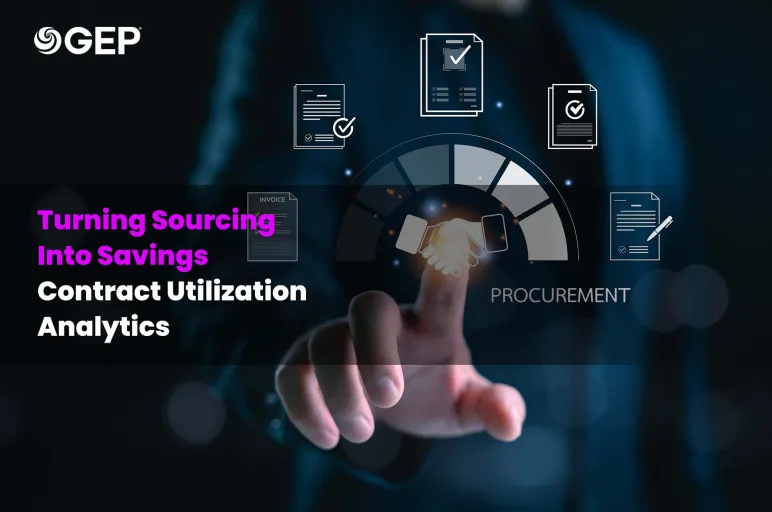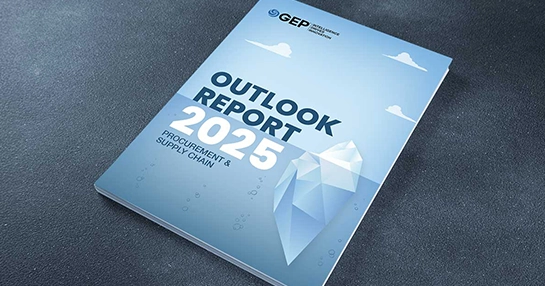
How Contract Utilization Analytics Turns Sourcing Wins into Real Savings
- Contract utilization analytics tracks spend against contract terms and negotiated pricing.
- The analytics also flags underused agreements and off-contract purchases instantly.
- Contract utilization analytics strengthens compliance and guides smarter supplier negotiations.
October 29, 2025 | Sourcing Strategy 4 minutes read
Procurement teams spend months negotiating contracts, driving prices down, and locking in service-level agreements that look perfect on paper. Then, somewhere between contract signature and day-to-day purchasing, the plan falls apart. Business units buy from non-contracted suppliers. Orders bypass preferred terms. Discount tiers remain untouched because spend doesn’t meet minimum volume commitments.
The result is familiar: procurement celebrates negotiated savings that never reach the bottom line. Finance sees the gap between contracted value and actual spend and questions whether those “savings” were ever real.
The aforementioned problem isn’t about poor negotiation. It’s about lack of visibility. Most organizations simply don’t track whether their negotiated contracts are being used as intended. In fast-moving procurement environments, this blind spot leads to off-contract purchases, missed rebates, and fragmented supplier relationships.
That’s the gap contract utilization analytics was designed to close.
Explore 101 AI Use Cases
Real-world use cases that show how AI is transforming every stage of procurement
Get the Report
Why Procurement Loses Sight of Contract Performance
Contracts live in one system. Spend data lives in another. Supplier transactions flow through a third. Getting a full picture means merging information across sourcing, ERP, and finance platforms — something most teams still do manually.
Because of that, contract compliance becomes a reactive process. Teams run quarterly or annual reviews, matching invoices against contract terms after the fact. By then, the damage is done. Volume commitments weren’t met, preferred supplier discounts expired, and business units have moved on with their own purchasing routes.
Rules-based reports don’t solve the issue. They can tell procurement how much spend occurred by supplier but not whether that spend aligns with the right contract, region, or category. Even when teams spot gaps, it’s usually too late to influence behavior.
According to GEP research, the absence of unified contract data and poor integration between procurement and finance systems remain two of the biggest barriers to realizing negotiated value. Without real-time visibility, procurement cannot manage contract performance — it can only audit it.
The Role of Contract Utilization Analytics in Driving Procurement Efficiency
Contract utilization analytics changes the process by connecting contracts directly to transaction data. It continuously matches purchase orders, invoices, and payments against the terms of each agreement — price bands, volume thresholds, rebates, and regions.
When actual spend falls below volume commitments, the system flags it. When business units buy from contracted suppliers but at non-contracted rates, it catches that too. Even purchases outside approved categories trigger alerts before payment, giving procurement a chance to intervene early.
This isn’t static reporting. The analytics engine learns from historical usage patterns. It understands which categories are prone to leakage and which suppliers consistently perform below contract terms. Over time, it becomes a living map of how well the organization is using its negotiated agreements.
For example, consider a global manufacturer that signs a three-year packaging contract with volume-based discounts. Halfway through the year, contract utilization analytics shows that only 60% of eligible purchases are going through that supplier, and smaller plants are still buying locally at higher prices. Procurement steps in, redirects spend to the contracted supplier, and unlocks the discount tier before it expires.
The same system can highlight contracts nearing renewal but underutilized. Instead of renewing automatically, category managers can review whether the agreement still fits business needs or should be renegotiated based on actual performance.
How Contract Utilization Analytics Enhances Procurement Strategies
Contract utilization analytics transforms how procurement manages both savings and compliance. It replaces guesswork with facts. Category managers can see, at any moment, how much of negotiated value has been realized and where gaps remain.
With that visibility, procurement can shift from periodic reporting to continuous improvement. Underused contracts get attention early. Off-contract spend becomes an exception, not the norm. Finance gains confidence that negotiated savings are real and traceable.
Supplier management also improves. When utilization data is tied to performance metrics, procurement can have informed discussions with suppliers. If a vendor’s share of wallet drops, both sides can review why — poor service, shifting demand, or lack of communication. These insights turn supplier reviews into productive strategy sessions instead of reactive blame games.
Contract utilization analytics helps enforce policy compliance. When the system detects repeated off-contract purchases, it identifies which business units or cost centers drive noncompliance. Procurement can then adjust buying channels, simplify access to preferred suppliers, or update catalogs to make compliance easier.
Ready for Growth? GEP Has the Answers
Transform your business with our AI-powered source-to-pay solutions
ASK US NOW
From Signed Contracts to Realized Value with AI-Enabled Procurement Software
Procurement software equipped with embedded analytics turns contract utilization from an audit exercise into a daily habit. When the system connects sourcing, contract management, and spend data, it becomes a single source of truth for compliance and performance.
When an invoice arrives, the system automatically validates it against contract terms. If pricing or category codes differ, it flags the issue before payment. If usage is trending below forecast, it alerts category managers so they can adjust sourcing or demand plans.
Each interaction refines the analytics. The system learns which deviations matter and which are routine. Over time, the model prioritizes high-risk gaps — such as off-contract spend in critical categories or missed volume rebates — ensuring teams focus where it counts most.
Procurement teams often say their job doesn’t end at contract signing. Contract utilization analytics proves it. It closes the loop between negotiation and execution, making sure every agreement delivers the value it promised. In the end, that’s what defines procurement excellence — not how well you negotiate, but how consistently you make those deals work in practice.



